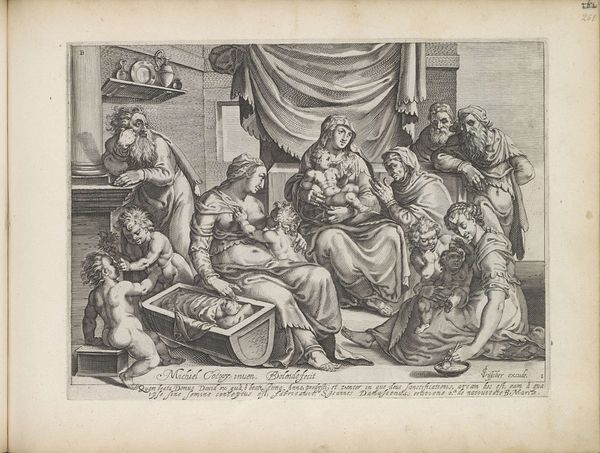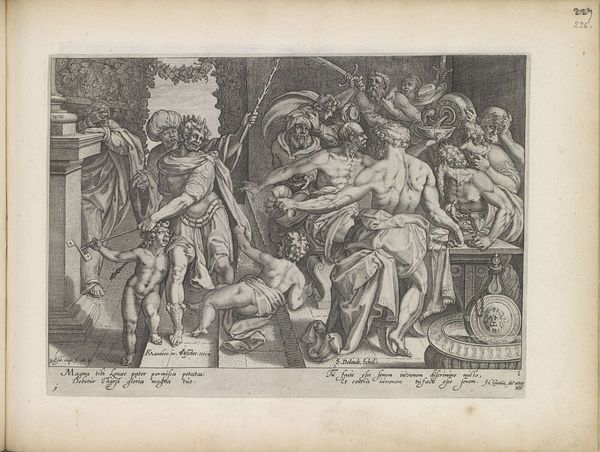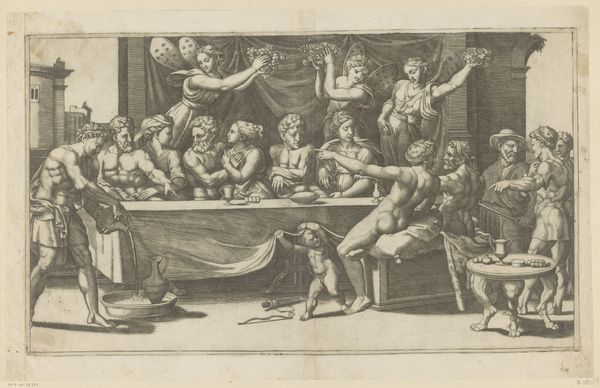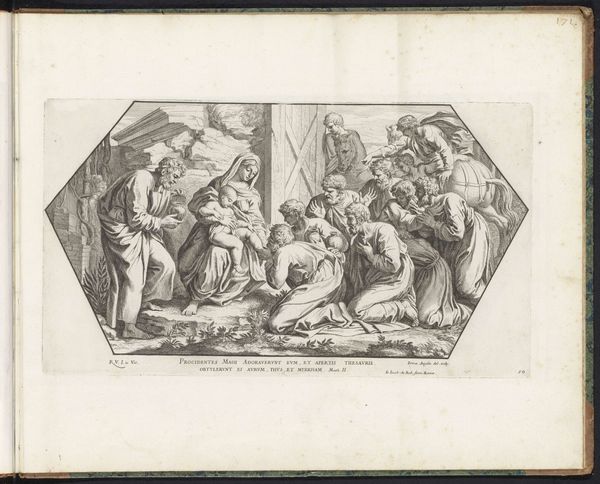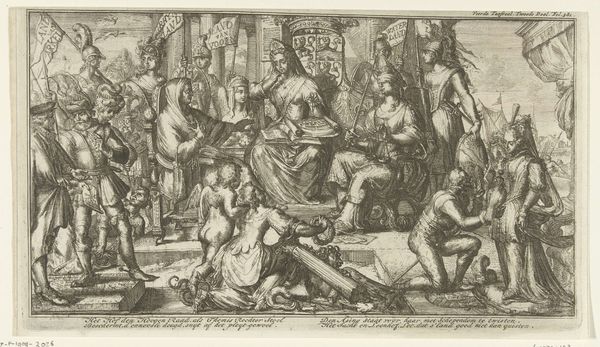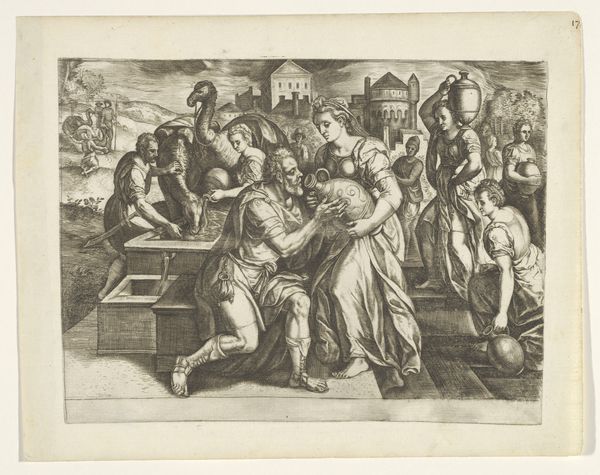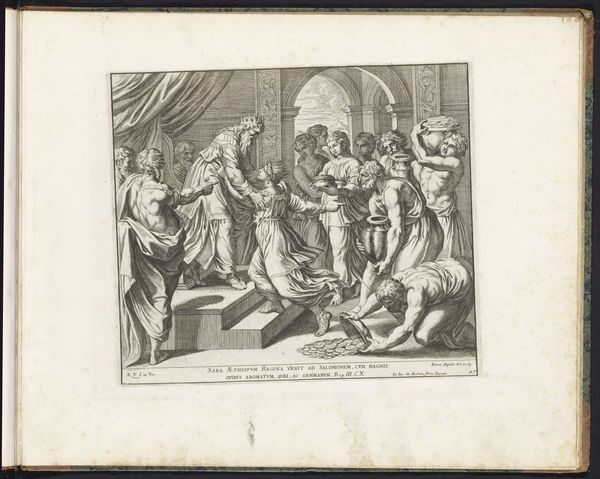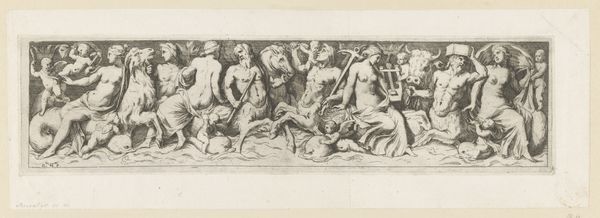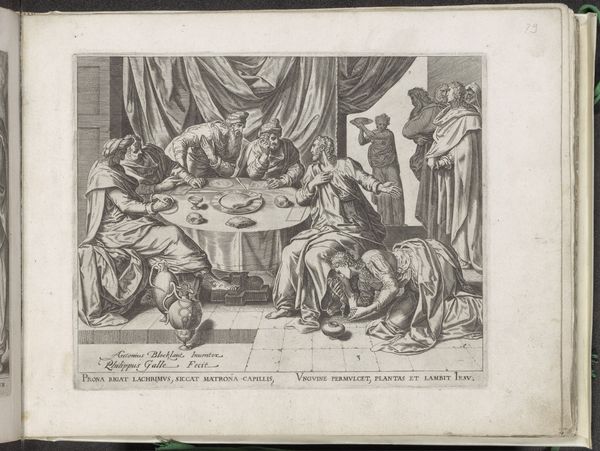
print, engraving
#
allegory
#
ink paper printed
# print
#
figuration
#
genre-painting
#
italian-renaissance
#
nude
#
engraving
Dimensions: height 210 mm, width 290 mm
Copyright: Rijks Museum: Open Domain
Curator: This piece, dating roughly from 1595 to 1643, is called "Macht van vrouwen," which translates to "The Power of Women." The engraving is attributed to Zacharias Dolendo and it's part of the Rijksmuseum's collection. What's your immediate response to it? Editor: It strikes me as surprisingly… unsettling. The figures are rendered with incredible detail, yet their interactions feel staged, almost like a bizarre puppet show. The nudity seems less celebratory and more like an exposure of vulnerability, or perhaps a demonstration of power, I'm not sure. Curator: Absolutely. Looking at it materially, we’re dealing with ink on paper, a readily reproducible medium even in the early modern era. Prints like this would have circulated widely, conveying ideas and allegories to a broad audience beyond the elite circles. What impact do you think this mode of production has on the image itself? Editor: The engraving process inherently flattens the scene, turning bodies into graphic symbols and amplifying certain visual cues. Notice how the lines on their bodies convey power dynamics as those that were originally engraved now tell their own tale, it speaks to me of control. Curator: That reading really resonates with me. We see women, both as figures of supposed leisure and as active agents seemingly controlling these men through implied desires and fantasies. Dolendo almost creates a debate on paper through these posed subjects, challenging and even toying with social values of the time, doesn’t he? Editor: Agreed. And look at the details—the textiles, the drapery, the accessories. The material world here is just as important as the allegorical one. This isn’t simply about lofty ideas of feminine power. It is about the world of commodities and exchange too, and about art's ability to record and sometimes, complicate these things. Curator: Complicate, indeed. To really sink your teeth into this, though, requires digging into the context of its production. Who commissioned it, where was it sold, what discussions would it have triggered? The lives that printed versions lived are part of it now. Editor: Yes, to grasp it, one must approach not just this artwork’s context but the historical forces by which its many subjects continue to confront and even haunt. Its impact ripples onward, into our present.
Comments
No comments
Be the first to comment and join the conversation on the ultimate creative platform.
